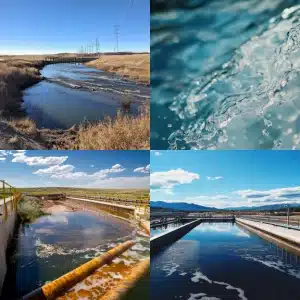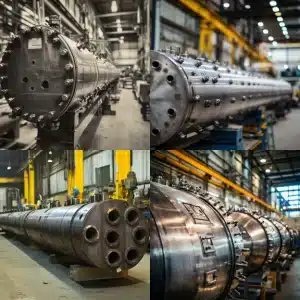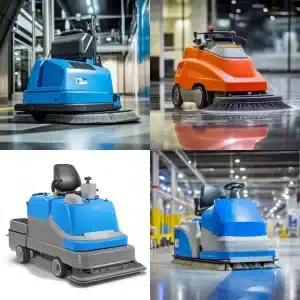Unusual taste, odor, discoloration, or health symptoms may signal unsafe drinking water, so testing is essential. Use proper filtration, perform regular maintenance, and schedule routine water tests to ensure long-term safety.
Signs of Unsafe Drinking Water
At Red River, we understand the importance of clean and safe drinking water. Recognizing the signs of unsafe drinking water such as unusual taste, odor, discoloration, or unexplained health symptoms is crucial for protecting yourself and your operations. Whether you’re managing industrial projects or ensuring your household’s water safety, knowing these indicators helps maintain a consistent supply of safe drinking water.
Unpalatably Astringent or Bitter Taste or Odor
One of the most obvious signs of unsafe drinking water is an unusual taste or smell. For instance, if your water has a bitter taste, smells metallic or like chlorine, or has a sulfur-like odor, it may contain harmful contaminants. Even if the water looks crystal clear, it could still harbor dissolved minerals or chemicals. Therefore, any abnormalities in taste or smell should prompt immediate testing using professional water testing services.
Murky or Coloured Water
Water that appears murky or discolored may carry dangerous bacteria or elevated sediment levels. Brown, yellow, or green hues may indicate contamination from corrosion or sediment buildup. Ignoring these signs could expose you to harmful elements, so seeking further testing is crucial with a certified lab analysis.
Health Symptoms From Dirty Water
Contaminated water may lead to unexplained health issues. If anyone experiences gastrointestinal distress, skin irritation, or other health concerns, contaminated water could be the source. Long-term exposure increases the risks of chronic illnesses. By identifying potential hazards early, water testing ensures your safety and health.
How to Test Your Drinking Water Safety
Testing for Drinking Water Safety in the Home
Home water testing kits offer a quick and cost-effective method for detecting contaminants like lead, chlorine, or bacteria. However, they only provide a basic overview and may miss low-level contamination. For comprehensive safety, follow up with professional water testing services.
Professional Water Testing Services
For a more thorough analysis, professional testing services assess a wider range of contaminants. With expert insights, you’ll have peace of mind knowing your water meets safety regulations. In addition, professional services identify potential issues early, allowing timely corrective measures. Learn more about pressure vessel applications in water systems for industrial and domestic use.
Steps to Ensure Your Drinking Water Is Safe
Installing a Water Filtration System
One of the best ways to keep water safe is by using a filtration system. Depending on your needs, you might consider systems like activated carbon filters for pesticides or reverse osmosis for heavy metals. By selecting the right filtration system, you can effectively remove harmful substances, providing your household or business with clean, safe water.
Filtration systems significantly reduce health risks by eliminating contaminants, ensuring a safer drinking supply for everyone.
Maintenance, Testing, and Signs of Unsafe Drinking Water
Once installed, a filtration system requires regular maintenance to remain effective. Filters should be replaced periodically, following the manufacturer’s recommended schedule. This ensures your water stays free from contaminants and maintains its quality.
Additionally, it’s crucial to schedule regular water tests ideally every six months. By doing so, you can confirm that your system consistently provides clean and safe water. At Red River LLC, we’re committed to guiding you through the maintenance and testing process.
For heavy-duty operations, consider the use of ASME-certified pressure vessels for water storage, which meet rigorous quality and safety standards. Our capabilities include designing, fabricating, and installing these systems with precision.
Need a reliable partner?
Red River specializes in the design and manufacturing of pressure vessels. We also fabricate related items such as prefabricated spools and skid packages.
Reach Out to us today and experience the Red River difference. Where American Made and American Values come together, we care more.
Frequently Asked Questions
1. What are the most common contaminants found in drinking water?
Bacteria, viruses, and protozoa are among the most frequent culprits in contaminated drinking water, often causing illness. Additionally, chemical contaminants such as lead, arsenic, and nitrates, as well as byproducts of chlorine, are common in areas with old infrastructure or industrial activity. Runoff from agriculture systems, carrying pesticides and fertilizers, can also enter water supplies. Therefore, monitoring for these substances is essential for safe drinking water.
2. How often should I test my drinking water?
The recommended frequency of water testing varies by source and location. For most homes, annual testing suffices, particularly for private wells. However, if you notice changes in taste, odor, or color, immediate testing is advisable. Industrial and commercial facilities should test more frequently every six months or after significant maintenance activities.
3. Does boiling water make it clean?
Boiling effectively kills bacteria, viruses, and some parasites. However, it doesn’t remove chemical contaminants like lead, nitrates, or pesticides. In some cases, boiling can concentrate harmful chemicals as water evaporates. Therefore, boiling should be combined with proper filtration methods, such as reverse osmosis or activated carbon filters, for complete water safety.
4. How do I choose a water filtration system for my residence or office?
Choosing a filtration system depends on the contaminants in your water. If your water contains high levels of lead, chlorine, or bacteria, reverse osmosis systems are highly effective. For taste and odor concerns, an activated carbon filter works well. For biological contaminants, consider a UV light system. Additionally, select a system size that suits your household or operational needs.
5. Is bottled water safer than tap water?
Bottled water isn’t inherently safer than tap water. Both must meet regulatory standards. However, bottled water from certain sources may carry impurities, especially in areas with poor infrastructure. Ultimately, filtering your tap water provides equal, if not better, quality while reducing plastic waste.
key takeaways
- Unusual taste, odor, or discoloration signals potential contamination: Bitter, metallic, or sulfur-like tastes, chlorine smells, or murky/colored water should prompt immediate testing.
- Health symptoms may indicate unsafe water: Gastrointestinal issues, skin irritation, or other unexplained illnesses can result from contaminated water.
- Regular testing and professional analysis are essential: Home kits provide a basic check, but certified lab testing ensures comprehensive detection of chemical and biological contaminants.
- Proper filtration and maintenance safeguard water quality: Installing suitable filtration systems, performing scheduled maintenance, and using ASME-certified pressure vessels help ensure long-term drinking water safety.
Related Blog Post




Choosing the Most Effective Scrubber Machine for Your Needs
Understanding Unregulated Drinking Water Sources | Red River
- Conductivity Levels in Drinking Water: Why They Matter for Safety and Industry
- Understanding Unregulated Drinking Water Sources | Red River
- Knowing Safe Drinking Water Standards | Red River
- Why Drinking Water Quality Standards Matter | Red River
- Understanding EPA Contaminants and Their Impact | Red River
- Knowing Safe Drinking Water Standards | Red River
